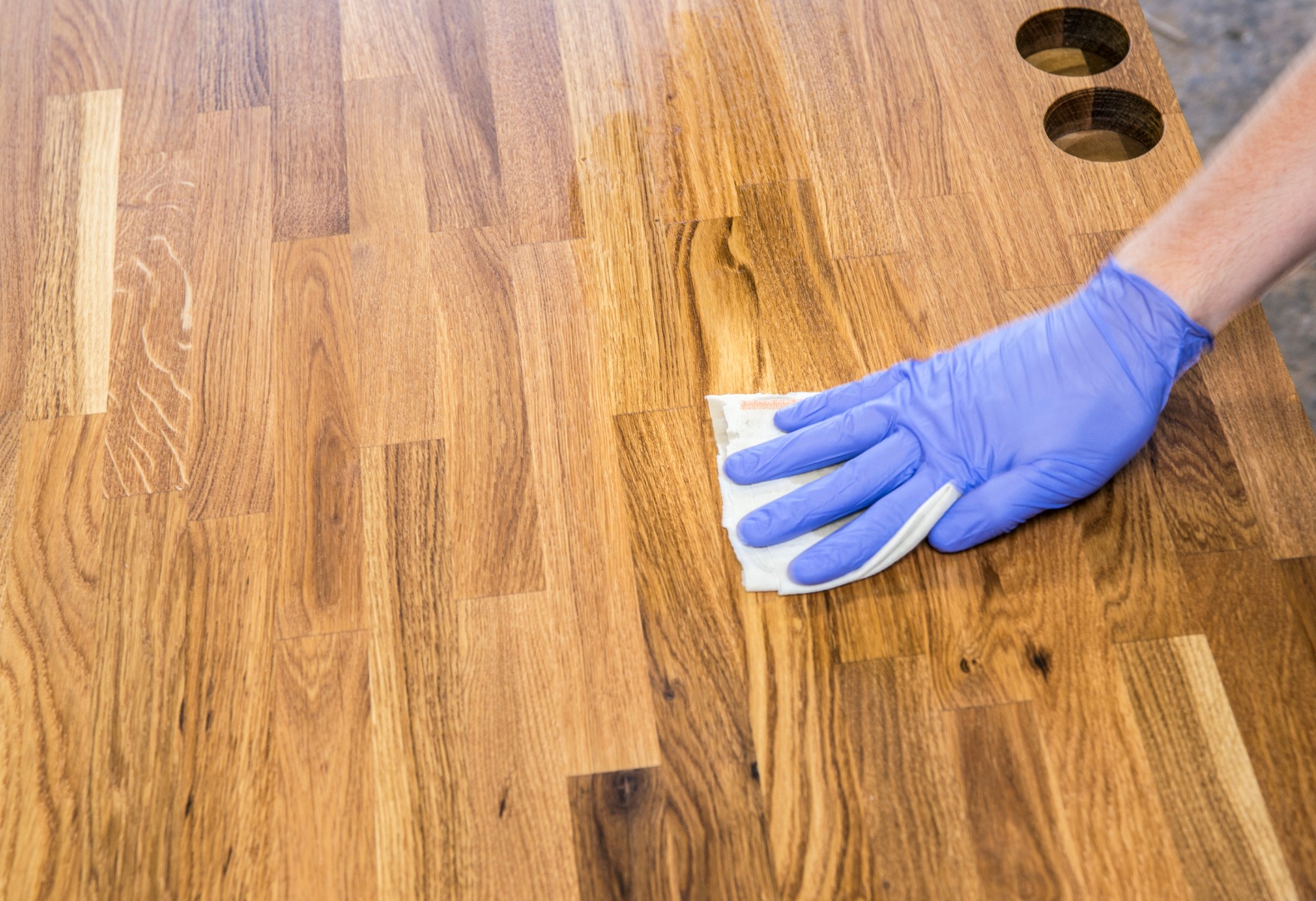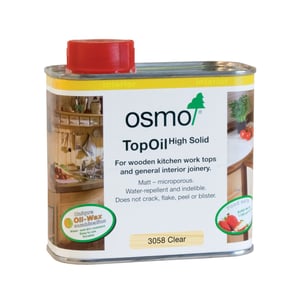Kitchen Worktop Oils, Which To Choose & Why? An Experts Review
There are various kitchen worktop oils on the market and some DIY suggestions we don’t recommend. The main consideration regardless of what you choose, should be to use a food-safe oil which is an oil certified (EN 1186) for use in food preparation areas like kitchens.
Why do you need to oil kitchen worktops?
Wood is a naturally porous surface which can absorb liquids, juices and bacteria from food preparation and other sources which leaves stains and marks on the wood as well as breeds germs and bacteria. It’s important to maintain wooden kitchen worktops using oil or wax which seals and preserves the worktop and prevents moisture and bacteria from penetrating the wood. This is also true for wooden floors and doors, read why oiling and maintaining these is crucial.
What are the risks of not sufficiently oiling kitchen worktops?
If you don’t properly maintain a wooden kitchen worktop, it will become stained and worn-looking over time. It’ll also harbour germs and bacteria from food preparation thanks to the porous nature of wood meaning it’ll absorb juices and liquids from meats and other food products.
So, which is the best kitchen worktop oil?
We’ve collated a list below of kitchen worktop oils and given our expert opinion on each to help you make a decision.

Osmo Top Oil - Our Top Recommendation
Osmo Top Oil Clear is an oil-wax combination for treating kitchen worktops made of wood. Based on natural plant oils and waxes, this top oil creates a microporous surface that will not crack, peel, flake or blister. It’s resistant to wine, beer, cola, coffee, tea, fruit juice, milk and water spillages in accordance with German DIN 68861-1A which means you won’t find water spots after use or stains left behind. We love Osmo Top Oil as it creates a highly durable, hard-wearing finish that maintains and enhances the woods natural colour and grain while sealing and protecting the wood from everyday kitchen spills and wear.
Pros
- Highly durable, resistant to coffee, tea, wine and cola spillages
- No sanding is necessary for future applications. Can be spot repaired
- Microporous, breathable finish which does not crack, peel or flake
- Very easy to apply
Cons
- Drying time is 8-10 hours between coats
Alternative Kitchen Worktop Oils:
Olive Oil
It's often recommended to use olive oil when oiling a wooden chopping board but it’s actually not the best idea as it can become a breeding ground for germs and stays wet for a long time, sometimes always keeping a wet touch which is uncomfortable to work on. It’s for these same reasons we don’t recommend using it for kitchen worktops. While it is a cost-effective method, in the long run, it really doesn’t perform as well as a dedicated worktop oil as it’s not designed to repel stains or moisture or withstand the everyday knocks and scuffs that a kitchen worktop faces.
Pros
- Fully natural product
- Low cost
Cons
- Always wet to touch meaning its uncomfortable to work on
- Can encourage bacteria to grow
- Not durable
- Not moisture or stain resistant
Danish Oil
Danish Oil is the most popular choice for kitchen worktops. It’s food safe and made from natural ingredients and while you can use it to maintain a kitchen worktop, it's a labour-intensive process. Oiling kitchen worktops with Danish Oil needs up to 8 or 9 coats to create a protective barrier and also requires regular maintenance, every 2-3 months so it’s not a quick process and doesn’t last as long as a worktop-specific oil. That being said, it’s sufficient for the maintenance of wooden kitchen worktops.
Pros
- Little to no colour change of the wood post application
- Can be highly durable if enough coats are applied
Cons
- Not as durable as dedicated worktop oils
- Needs 8-9 coats for a durable finish
- Needs to be reapplied every 2-3 months
- Can be sticky to the touch if coats are applied too thick



